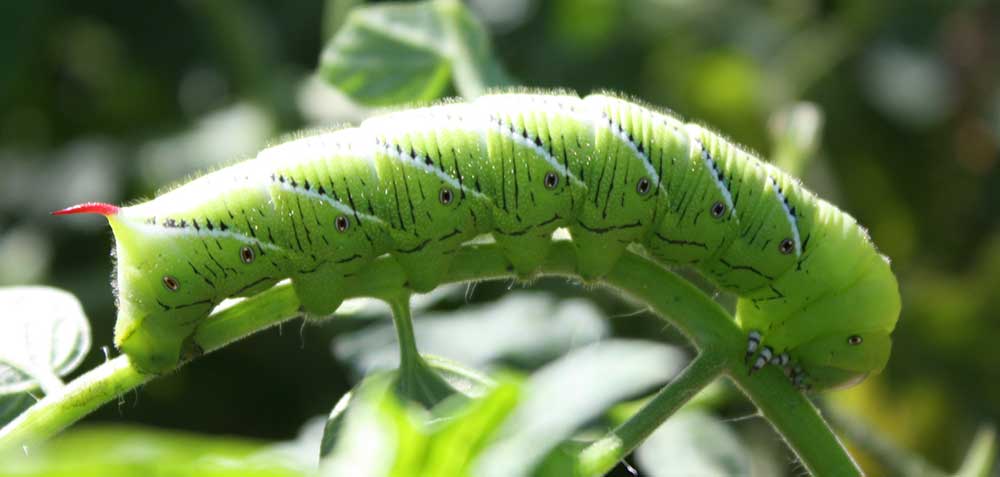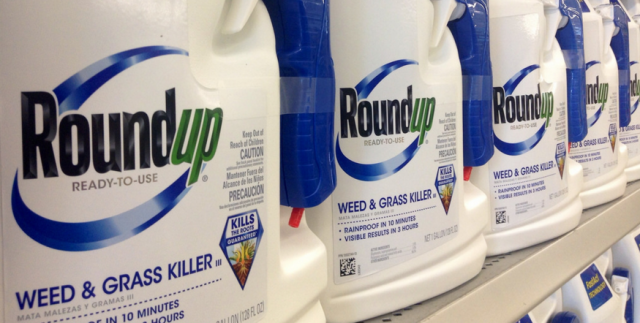Story at-a-glance
- In contrast to the International Agency for Research on Cancer’s (IARC) conclusion that glyphosate is a probable carcinogen, the U.S. Environmental Protection Agency released a paper in October 2015 stating the chemical is not likely to be carcinogenic to humans
- Monsanto, which is being sued over the chemical allegedly causing non-Hodgkin’s lymphoma in at least 50 people, has used the EPA’s report in court hearings to suggest glyphosate is safe
- The plaintiffs’ attorneys are asking for documents detailing Monsanto’s interactions with a key former EPA official who worked on the report to be made public, suggesting they show the EPA collaborated with Monsanto to protect the company’s interests
The U.S. Environmental Protection Agency (EPA) is once again facing scrutiny over its dealings with Monsanto, the maker of Roundup herbicide.
In 2015, glyphosate, Roundup’s active ingredient, was determined to be a “probable carcinogen” by the International Agency for Research on Cancer (IARC), which is the research arm of the World Health Organization (WHO).
The EPA, rather than taking immediate steps to protect Americans from this probable cancer-causing agent, decided to reassess its position on the chemical and, after doing so, released a paper in October 2015 stating that glyphosate is not likely to be carcinogenic to humans.1
In April 2016, the EPA posted the report online, briefly, before pulling it and claiming it was not yet final, and had been posted by mistake.
The paper was signed by Jess Rowland (among other EPA officials), who at the time was the EPA’s deputy division director of the Office of Chemical Safety and Pollution Prevention and chair of the Cancer Assessment Review Committee (CARC).
This is notable because Monsanto is currently embroiled in a number of lawsuits, including litigation from more than 50 people who claim exposure to Roundup caused them to develop non-Hodgkin’s lymphoma (NHL).
Monsanto has used the EPA’s supposedly-not-final report in court hearings to suggest glyphosate is safe, and now the plaintiffs’ attorneys are asking for documents detailing Monsanto’s interactions with Rowland to be released.
EPA, Monsanto Refuse to Lift Seal on Controversial Documents
In a review published in the Journal of Epidemiology & Community Health, a team of scientists thoroughly reviewed the research behind the IARC’s glyphosate/cancerruling, noting an association between glyphosate and non-Hodgkin’s lymphoma was found based on available human evidence.2
Associations between the chemical and rare kidney tumors, genotoxicity and oxidative stress and even DNA damage in the blood of exposed humans were also revealed.
But industry is working hard to ensure that any science and other evidence not on their side is overlooked, including allegations that Monsanto has long known glyphosate causes cancer and spent decades covering it up.
Toward that end, the attorneys for the plaintiffs in the NHL lawsuit asked to depose Rowland and unseal documents detailing Monsanto’s relationship with the former EPA official (curiously, he left the EPA shortly after the CARC paper was taken down from the EPA’s website).
While Monsanto released 6 million pages of documents, 85 percent of them were marked as “confidential,” which means important data is blacked out during court filings and not viewable to the public. According to The Huffington Post:3
“The lawyers say that the documents obtained through discovery show that ‘Monsanto has been confident all along that EPA would continue to support glyphosate, whatever happened and no matter who held otherwise.’
According to the court filings by plaintiffs’ attorneys, the documents show ‘it is clear that Monsanto enjoyed considerable influence within the EPA’s OPP [Office of Pesticide Programs], and was close with Mr. Rowland …
The documentary evidence strongly suggests that Mr. Rowland’s primary goal was to serve the interests of Monsanto.’
… [A]long with Monsanto’s objection to releasing the documents that relate to its conversations with Rowland, the EPA has specifically refused the deposition request, saying it would ‘not clearly be in the interests of EPA’ to allow attorneys to question Rowland about the cancer review and interactions with Monsanto.”
Monsanto Sues the State of California
While the EPA seems to be treading water (and even backpedaling) rather than moving forward to stop the unchecked use of glyphosate-based products in the U.S., California’s Environmental Protection Agency’s Office of Environmental Health Hazard Assessment (OEHHA) announced in 2015 that they intended to list glyphosate as a chemical known to cause cancer under Proposition 65, which requires consumer products with potential cancer-causing ingredients to bear warning labels.
Rather than label their products sold in California as likely carcinogenic, most companies reformulate their product ingredients so as to avoid warning labels altogether, and most did this on a national scale, not just in California.
Monsanto, however, is trying a different strategy. They filed formal comments with OEHHA saying the plan to list glyphosate as a carcinogen should be withdrawn. Their reasoning was that California’s actions could be considered illegal because, Monsanto claimed, they were not considering valid scientific evidence.4
The comment was slipped in on the final day the state accepted public comments, perhaps because Monsanto was trying not to attract too much fanfare to their attempts to keep people in the dark about their carcinogenic product.
In January 2016, Monsanto took it a step further and filed a lawsuit against OEHHA to stop the glyphosate/cancer classification, calling it unconstitutional because OEHHA “delegated law-making authority ‘to an unelected and non-transparent foreign body [IARC] that is not under the oversight or control of any federal or state government entity,'” EcoWatch reported.5
OEHHA has filed a motion to dismiss the lawsuit, EcoWatch continued, stating “IARC’s scientific determinations are ‘the gold standard in carcinogen identification,’ and are trusted and relied upon by state governments, the federal government and foreign governments alike.”6
Whether the case is dismissed or allowed to proceed could have major implications not only for Monsanto but also for the classification of cancer-causing chemicals moving forward.
Washington State Sues Monsanto Over PCB Pollution
In December, 2016, Washington became the first U.S. state to sue Monsanto over PCB (polychlorinated biphenyl) pollution. The state is seeking damages on several grounds, including Monsanto’s failure to warn about PCBs, negligence and trespass for harming the state’s natural resources.
Democratic Gov. Jay Inslee and Attorney General Bob Ferguson said they expect to win hundreds of millions or billions of dollars from Monsanto, noting that despite millions of dollars spent by the state for cleanup, the chemicals are still causing harm to protected salmon and orcas.
The suit alleges that Monsanto knew PCBs were toxic for a decade before they were eventually banned in 1979. Ferguson’s office compared the state’s approach in pursuing legal action against Monsanto to the approach taken against tobacco companies in the 1990s.
The settlement reached with Big Tobacco was more than $200 billion (nationally), which was split among the states in yearly payments intended to help offset health care costs related to smoking.7
In addition, an increasing number of U.S. cities in Washington and California, including Seattle, Spokane, San Diego, San Jose, Oakland and Berkeley, have filed lawsuits against Monsanto for causing disastrous environmental pollution.
In October 2016, the company filed a motion to dismiss Spokane’s lawsuit, which alleges PCBs have contaminated the city’s storm water, but a judge ruled it could proceed.8
Berkeley, San Jose and Oakland, meanwhile, had to refile their complaints after a judge threw theirs out because they did not have ownership of storm water.
The amended complaints now point out that city governments can capture and reuse storm runoff, which gives them a property interest in the water and therefore grounds for filing suit against Monsanto’s PCB pollution.9
EPA Puts Off Taking Action Against Bee-Toxic Pesticides
EPA’s song-and-dance routine surrounding glyphosate is disturbingly similar to the one going on for neonicotinoid pesticides (aka neonics), which are implicated in killing bees. In January 2017, the EPA published preliminary risk assessments for the neonicotinoid insecticides clothianidin, thiamethoxam and dinotefuran.
They also updated their preliminary risk assessment for imidacloprid, which was published in January, 2016. While acknowledging risks from certain applications, the EPA’s assessment also suggested the chemicals could be safely used.
“[M]ost approved uses do not pose significant risks to bee colonies,” according to the EPA. “However, spray applications to a few crops, such as cucumbers, berries and cotton, may pose risks to bees that come in direct contact with residue.”10
The risk assessments are now open for public comment, and the EPA plans to coast for another 1.5 years, minimum, before releasing a final neonicotinoid risk assessment in mid-2018. Larissa Walker, Center for Food Safety pollinator program director, said in a news release:11
“Even in their limited scope these risk assessments clearly show harm to bees and other pollinators from uses of neonics. But rather than suspend uses of these harmful chemicals while the agency continues to gather more data, EPA is refusing to take strong regulatory action until late 2018 or 2019 …
Bees and beekeepers have already waited too long for much-needed government protections for pollinators. The time for the EPA to take action is now.”
Monsanto’s Genetically Engineered (GE) ‘Grass Gone Wild’
The U.S. Department of Agriculture (USDA) is another government agency keen on protecting Monsanto’s interests. In 2003, with the permission of the USDA, Monsanto and Scotts performed a field trial of experimental GE grass which, like Roundup Ready crops, is impervious to Monsanto’s Roundup herbicide.
The trial was conducted in Central Oregon on a 400-acre plot near the Crooked River National Grassland. The grass, a type of GE creeping bentgrass that was being designed specifically for use on golf courses, turned out to be extremely hardy — so hardy that Oregon Live described it as “nearly impossible to eradicate.”12
The experimental test plot was shut down and the U.S. Fish and Wildlife Service expressed concerns that the grass could negatively affect endangered species in Oregon. But by then it was too late. The grass had already spread beyond the test plot, including into the national grassland preserve.
More than a decade later, the invasive GE grass is still a problem in Oregon. Monsanto and Scotts are growing tired of the battle and, as is the case with Monsanto and PCBs, are looking to be let off the hook.
USDA Finalizes Deregulation of GE Grass
Monsanto and Scotts petitioned the USDA to deregulate (i.e., remove restrictions from) the GE bentgrass seeds, which is typically done when a company wants to bring the product to market. The companies claim they will not sell the seeds in the future, which means they’re seeking deregulation for another purpose.
Namely, if the GE grass is deregulated, Monsanto and Scotts will not be liable for any damage related to their “grass gone wild.”13,14 As explained by Oregon Live:15
“The reason they are willing to go through the long, expensive deregulation process is simple: If the USDA grants their petition, the ongoing invasion suddenly becomes Oregon’s problem, not Scotts’ and Monsanto’s. Equally troubling is that, once the bentgrass is deregulated, the USDA would no longer have the authority to monitor whether Scotts and Monsanto keep their word about not selling these seeds.
With the recent approval of Roundup-resistant Kentucky bluegrass and tall fescue turfgrass, these companies are moving aggressively to dominate the grass seed market. And, without any legal hurdles in their way, there could be extreme pressure to eventually sell these seeds.”
In a strikingly blatant show of solidarity to industry in lieu of the public, in January, 2017, the USDA issued their final deregulation for the GE bentgrass. Jerry Erstrom, chairman of the Malheur County (Oregon) Weed Board, which declared GE creeping bentgrass a noxious weed in 2016, called the move “a slap in the face to family farmers,” EcoWatch reported.16 Lori Ann Burd, director of the environmental health program at the Center for Biological Diversity, continued:17
“The USDA’s decision ignores a groundswell of united opposition from state departments of agriculture, the U.S. Fish and Wildlife Service, university professors, scientists, farmers and conservationists …
Because this blatant bow to industry will continue to harm farmers, endangered species and the precious landscape, the USDA has left us with no choice but to explore our legal options to return the burden of controlling this weedy grass back to the shoulders of the corporate profiteers who brought it into the world.”
Test Your Personal Glyphosate Levels
If you’d like to know your personal glyphosate levels, you can now find out, while also participating in a worldwide study on environmental glyphosate exposures. The Health Research Institute (HRI) in Iowa developed the glyphosate urine test kit, which will allow you to determine your own exposure to this toxic herbicide.
Ordering this kit automatically allows you to participate in the study and help HRI better understand the extent of glyphosate exposure and contamination. In a few weeks, you will receive your results, along with information on how your results compare with others and what to do to help reduce your exposure. We are providing these kits to you at no profit in order for you to participate in this environmental study.
In the meantime, eating organic as much as possible and investing in a good water filtration system for your home are among the best ways to lower your exposure to glyphosate and other pesticides. In the case of glyphosate, it’s also wise to avoid crops like wheat and oats, which may be sprayed with glyphosate for drying purposes prior to harvest.
GMO proponents claim that genetic engineering is “safe and beneficial,” and that it advances the agricultural industry. They also say that GMOs, or genetically “engineered” (GE) foods, help ensure the global food supply and sustainability. But is there any truth to these claims? I believe not. For years, I’ve stated the belief that GMOs pose one of the greatest threats to life on the planet. Genetic engineering is NOT the safe and beneficial technology that it is touted to be.
The FDA cleared the way for GE (Genetically Engineered) Atlantic salmon to be farmed for human consumption. Thanks to added language in the federal spending bill, the product will require special labeling so at least consumers will have the ability to identify the GE salmon in stores. However, it’s imperative ALL GE foods be labeled, which is currently still being denied.
The FDA is threatening the existence of our food supply. We have to start taking action now. I urge you to share this article with friends and family. If we act together, we can make a difference and put an end to the absurdity. Thankfully, we have organizations like the Organic Consumers Association (OCA) to fight back against these corporate giants. So please, fight for your right to know what’s in your food and help support the GMO labeling movement by making a donation today.
I have found very few organizations that are as effective and efficient as OCA. It’s a public interest organization dedicated to promoting health and sustainability. OCA and I thank you for everything you’ve done to further this cause, and hope you stick with us as we move forward. I strongly encourage you to give OCA your financial support, because we are making a huge difference.
Food companies have to start being honest and truthful in telling us what’s in our food, and we will not quit until they do. We can’t do it alone, however. We need your help, and this week, you can seriously maximize the impact of your generosity, because I will match each and every dollar you donate to the OCA with $3, up to $250,000.







 This is a common argument made by GE-food proponents, and commonly used whenever an expert brings up a challenge to the technology’s safety. For example, David Schubert, PhD, a molecular biologist and the Head of Cellular Neurobiology at the Salk Institute for Biological Studies, commented in Nature Biotechnology that there was mounting evidence that the insertion of even one gene into a cell’s DNA alters the expression patters of genes throughout the entire cell. He said facts like this one, among many others, “cast doubt on the soundness of agricultural bioengineering — and entail the conclusion that it ‘is not a safe option.’ “
This is a common argument made by GE-food proponents, and commonly used whenever an expert brings up a challenge to the technology’s safety. For example, David Schubert, PhD, a molecular biologist and the Head of Cellular Neurobiology at the Salk Institute for Biological Studies, commented in Nature Biotechnology that there was mounting evidence that the insertion of even one gene into a cell’s DNA alters the expression patters of genes throughout the entire cell. He said facts like this one, among many others, “cast doubt on the soundness of agricultural bioengineering — and entail the conclusion that it ‘is not a safe option.’ “






